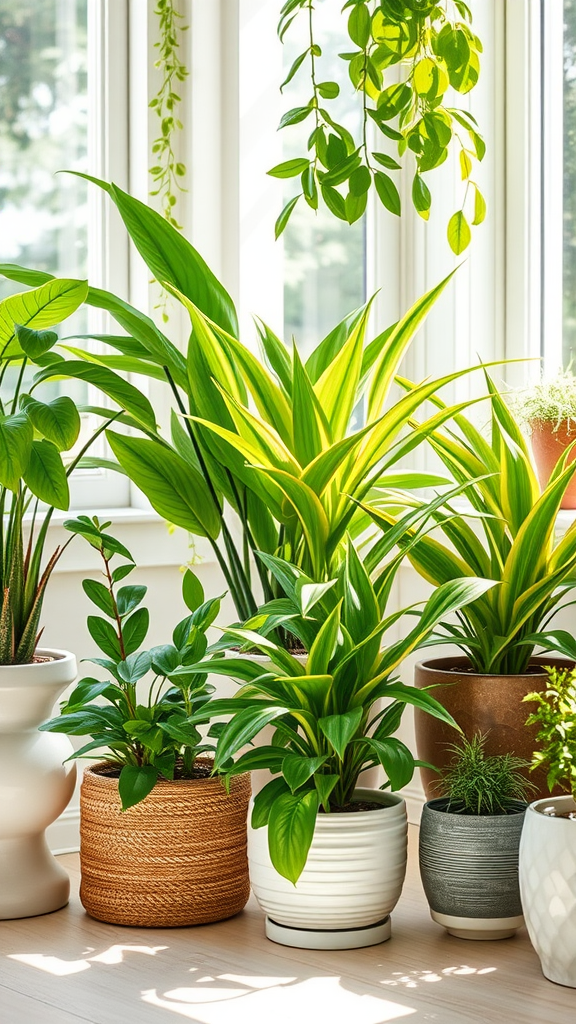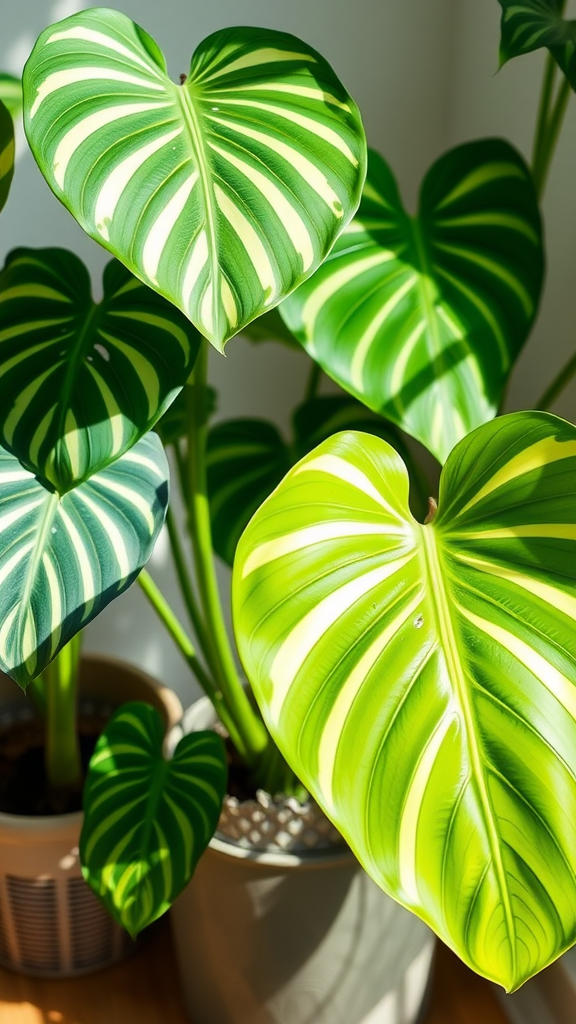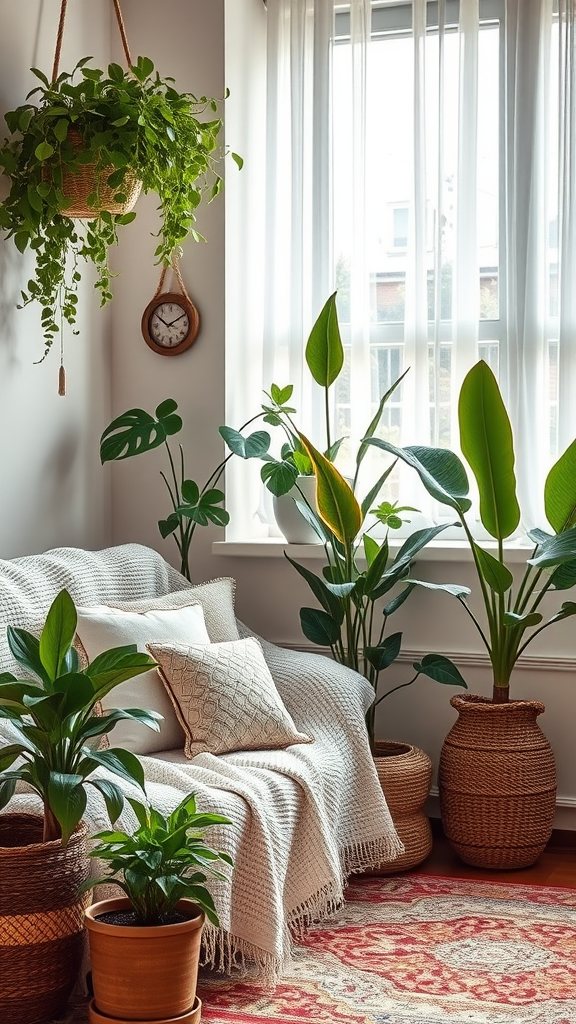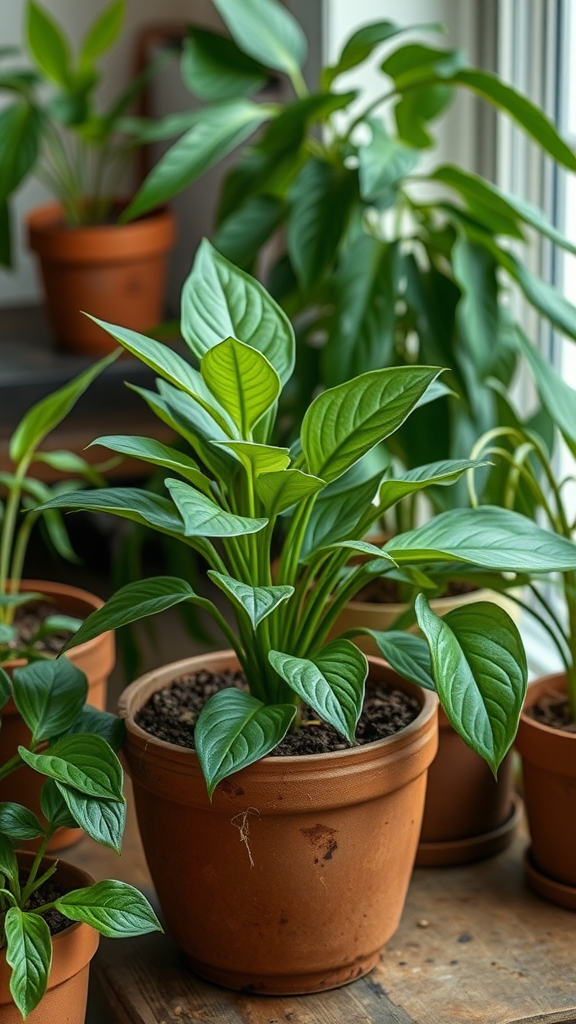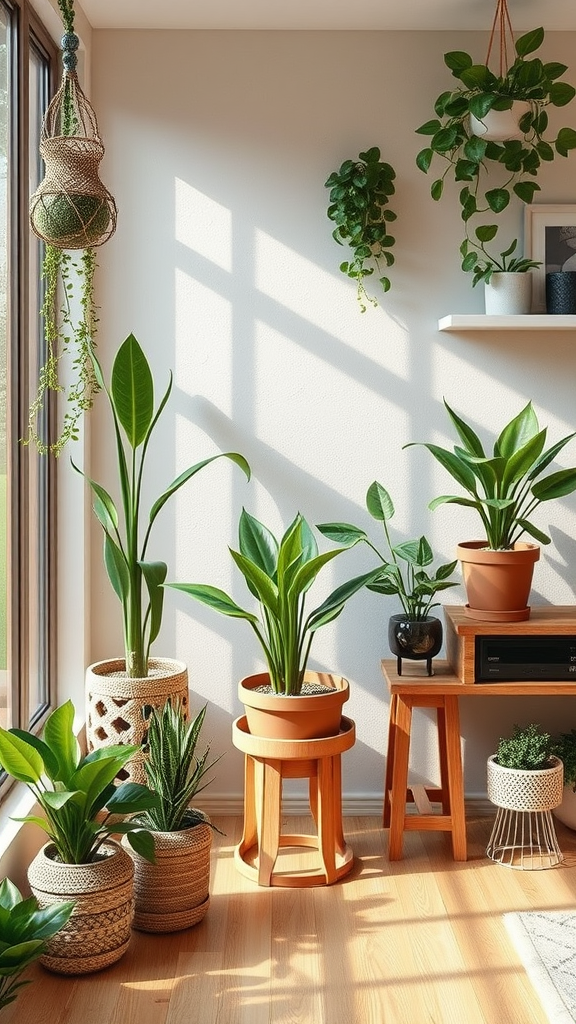Summer Houseplant Care: Essential Tips to Thrive in Hot Weather
As the summer sun blazes, keeping your houseplants thriving can feel like a challenge. The hot weather can affect your indoor garden, leading to problems like wilted leaves or dried-out soil. Fortunately, with the right care and attention, you can keep your plants happy and healthy throughout the summer months. Here are essential tips to ensure your houseplants shine, even in the heat:
Watering Wisely
One of the most crucial aspects of summer houseplant care is managing how often and how much you water. During hot weather, plants can dry out quickly. Here’s how to keep your watering schedule on point:
- Check Soil Moisture: Always feel the top inch of the soil. If it’s dry, it’s time to water!
- Water Deeply: When watering, make sure to saturate the soil thoroughly. This encourages healthy root growth.
- Adjust Your Schedule: Water in the early morning or late evening to prevent evaporation from the heat.
Providing Shade
Too much direct sunlight can scorch the leaves of delicate plants. Consider these shading tips:
- Move Plants Away from Windows: If direct sunlight is too intense, relocate your plants to a spot with filtered light.
- Use Sheer Curtains: Hang these to diffuse sunlight while still allowing brightness in.
- Group Plants Together: Placing plants close can create a more humid environment, offering natural shade from one another.
Humidity Matters
Many houseplants benefit from higher humidity levels, especially in the summer. Here’s how you can boost humidity:
- Use a Humidifier: Setting up a small humidifier in your plant area can do wonders.
- Place Water Trays Nearby: Fill shallow dishes with water and pebbles and place them beneath your plants for natural humidity.
- Misting: Lightly misting your plants in the morning can help maintain humidity without overwatering.
Feeding Your Plants
During the growing season, plants need nutrients to thrive. Follow these tips for feeding your houseplants:
- Use Balanced Fertilizer: Opt for a balanced liquid fertilizer every four to six weeks during summer to promote growth.
- Do Not Over-Fertilize: Too much fertilizer can harm plants. Follow the recommended dosage on the product label.
- Choose Organic Options: Organic fertilizers can provide a gentler option for your plants without the risk of chemical burn.
Regular Pruning
Summer is a great time to tidy up your plants. Regular pruning can help your plants focus their energy on new growth:
- Remove Dead or Yellowing Leaves: This helps improve air circulation and prevents pests.
- Trim Back Leggy Growth: If you notice stretching or sparse areas, trimming back can encourage bushier growth.
- Shape Your Plants: A little shaping can enhance your plant’s appearance and help maintain its size and health.
Watch for Pests
Heat can attract unwanted pests. Checking your plants regularly can help you catch infestations early:
- Inspect Leaves: Look for signs of bugs, such as webs or small holes.
- Use Insecticidal Soap: If you notice pests, a gentle insecticidal soap can be effective against many common problems.
- Isolate Affected Plants: If you find an infestation, separate affected plants from healthy ones to prevent the spread.
By following these tips for summer houseplant care, you’ll create a thriving environment for your indoor garden. Remember, your plants can sense your efforts, and with a little attention, they can flourish beautifully, even during the hottest months of the year.
Understanding the Impact of Heat on Indoor Plants and How to Mitigate Stress
The summer heat can significantly affect your indoor plants, causing stress that may lead to wilting, leaf drop, or even death. Understanding how heat affects these green companions and how to mitigate its impact is essential for every plant lover. Here’s what you need to know to keep your indoor plants thriving during those hot months.
Recognizing Heat Stress
Indoor plants can show several signs when they are experiencing heat stress. Watch for these common symptoms:
- Yellowing Leaves: When plants get too hot, the leaves may start to turn yellow, indicating they’re struggling.
- Wilting: Plants may become droopy as they lose water through evaporation.
- Leaf Drop: Sudden heat can cause plants to drop their leaves in an effort to conserve energy.
- Browning Edges: The tips of the leaves may brown, a sign of dehydration.
How Heat Impacts Indoor Plants
High temperatures can have a direct effect on plant physiology. When temperatures rise, several internal processes are impacted, including:
- Transpiration: This process involves water moving from the roots to the leaves. Excessive heat speeds up transpiration, but if the plant can’t absorb moisture quickly enough, wilting occurs.
- Photosynthesis: Plants harness sunlight to produce food. Heat affects enzymes in the photosynthesis process, leading to reduced growth.
- Nutrient Uptake: High temperatures can stress roots, making it harder for them to absorb vital nutrients.
Understanding these impacts helps plant owners take proactive measures to care for their indoor plants during hot weather.
Effective Strategies to Mitigate Heat Stress
Here are several effective strategies to ensure your indoor plants stay healthy and happy, even as the temperatures rise:
- Optimal Placement: Keep your plants in areas with indirect sunlight. If they’re near windows that get intense afternoon sun, consider moving them away to avoid scorching.
- Humidity Control: Most indoor plants thrive in humid conditions. Increase humidity by misting your plants or placing a small humidifier nearby. You can also set your plant pots on trays filled with water and pebbles to create a microclimate.
- Regular Watering: During the summer, plants may need more frequent watering. Check the soil regularly. If it’s dry an inch down, it’s time for a drink. Ensure you water in the morning or evening to reduce evaporation.
- Temperature Monitoring: Use a thermometer to keep track of indoor temperatures. If your home gets too hot, consider using fans or air conditioning to maintain a comfortable environment.
- Fertilizing: Heat can affect nutrient uptake, so use a diluted liquid fertilizer during summer months to support plant health as they actively grow.
Choosing the Right Plants for Summer
If you’re planning to add to your indoor garden, consider choosing plants that naturally thrive in warmer conditions. Here are a few resilient options:
- Succulents: These low-maintenance plants store water in their leaves, making them perfect for hot climates.
- Snake Plants: Known for their hardiness, they can tolerate heat and low light well.
- Pothos: This vining plant adapts well to different conditions and is forgiving if you occasionally forget to water.
By selecting suitable plants, you can reduce the stress on both you and your indoor garden.
Understanding how heat affects indoor plants and implementing these strategies can significantly improve your plant’s resilience during the summer months. Remember, each plant is unique, and observing them closely will help you learn their specific needs. With a little effort and care, you can keep your indoor plants happy and thriving, even in the heat!
Conclusion
As the sun blazes bright during summer, your houseplants need special attention to flourish in the heat. By following essential care tips—like adjusting watering schedules, providing adequate humidity, and ensuring proper lighting—you can create an environment where your plants thrive. Remember, indoor plants have their own preferences, so observe their responses and adjust your care accordingly.
Understanding how high temperatures affect your greenery is crucial to keeping them healthy. Heat can lead to stress, prompting issues like wilting or drooping leaves. To combat this, consider using fans for air circulation and moving plants away from direct sunlight if needed. Paying attention to signs of stress enables you to act quickly, allowing your plants to regain their vigor.
Invest time in adapting your routines, whether it’s altering your watering practices or utilizing humidity trays. Each small effort adds up, ensuring your plants not only survive but also thrive during the warm months. By remaining proactive about their needs, you set the stage for vibrant growth and beautiful blooms.
Enjoy the rewarding experience of nurturing your indoor garden this summer. With the right knowledge and care techniques, you’ll keep your plants happy and healthy, providing a refreshing oasis in your home. Embrace this opportunity to connect with nature and watch as your summer houseplants flourish under your careful stewardship. Your plants deserve the best, and by investing in their care, you’ll create a lush, thriving indoor haven.

